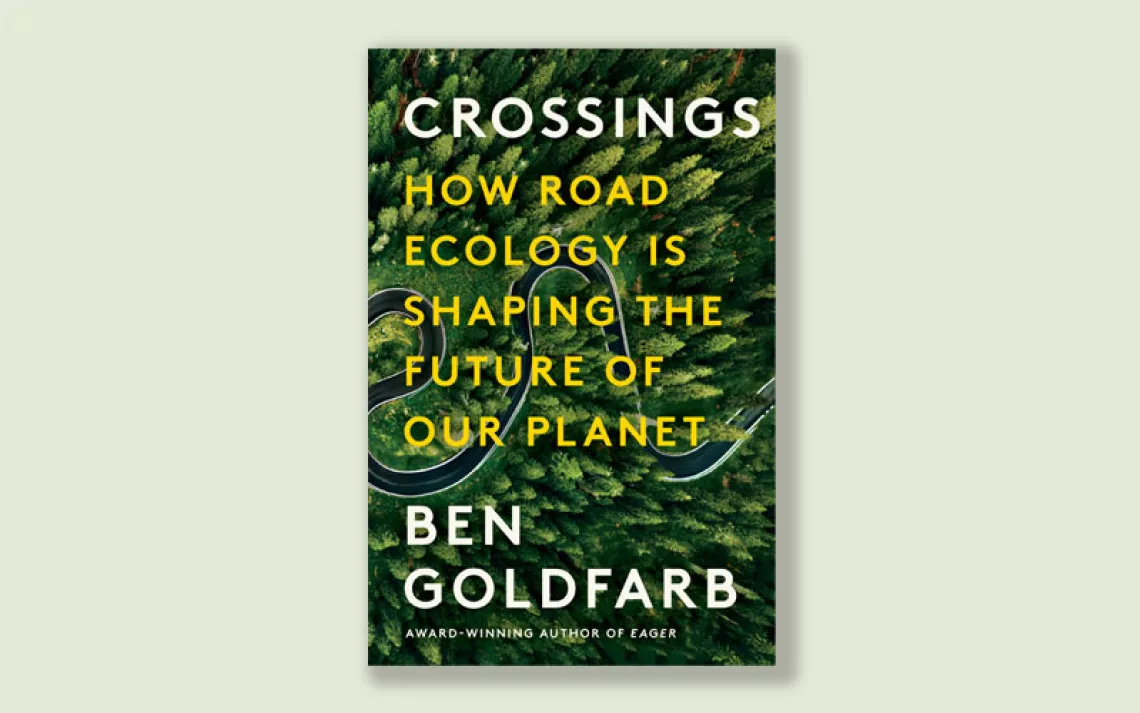Unintended Consequences
A review of Elizabeth Kolbert’s new book, "Under a White Sky"

Pulitzer Prize–winning journalist Elizabeth Kolbert’s latest book, Under a White Sky: The Nature of the Future (Crown, 2021), is mostly about the shape of things to come, but it begins in a backward direction. She opens with a tour of the Chicago Sanitary and Ship Canal, a waterway that is a far cry from sanitary. The canal forces the Chicago River to reverse its flow, directing “the city’s ordure” away from Lake Michigan toward the greater watershed of the Mississippi River and, eventually, release in the Gulf of Mexico a thousand miles away. Forty-three million cubic yards of rock and soil were excavated to create the canal, necessitating the invention of a suite of new technologies that together became known as the Chicago School of Earth Moving. Completed at the turn of the last century, the canal is a marvel of human engineering. Depending upon your politics, it’s either surprising or totally predictable that, in the course of solving one problem, the canal created new ones.
By connecting the Mississippi River’s drainage basin with the Great Lakes’, the reversal of the Chicago River transformed the hydrology of two-thirds of the United States. Today, fish that are exotic to either water system have potential access to both, where they can wreak considerable havoc. The greatest threat is the Asian carp. Introduced in the 1960s as a low-cost strategy for keeping aquatic weeds in check, Asian carp have overwhelmed native fish in the Mississippi and Ohio Rivers. Now, they are advancing on the Great Lakes. One strategy to prevent them from accessing the Great Lakes is to equip the canals with electric currents. A better, likely more long lasting way to deal with the carp and other invasive would be to reimpose “hydraulic separation” between the Great Lakes and the Mississippi. But doing so would entail rerouting boat traffic, redesigning flood controls, and revamping sewage treatment systems. That’s not going to happen. As Kolbert writes, “It was a lot easier to imagine changing the river once again … than changing the lives of the people around it.”
Welcome to the Anthropocene—the human age. All species contribute to making the environments in which they live. Plants influence soil and atmospheric chemistry. Birds help seed grasslands and forests, creating shelter and food sources as they come and go. Beavers alter geomorphology and hydrology, creating more habitat for other species. But only Homo sapiens shape the entire global and planetary systems. As Kolbert summarizes, we have transformed more than half of ice-free terrestrial Earth, dammed or diverted most major rivers, and essentially replaced the bodies of wild animals with domesticated ones, as humans and our livestock outweigh wild mammals by 22 to one. The Anthropocene is directed by humanity—at once accidentally and intentionally, consciously and unconsciously—and we are overwhelmingly the stars of the show. Which may, of course, close early.
Kolbert profiles a suite of schemes aimed at redressing some of the worst consequences of what is optimistically called human ingenuity. Most of her stories are about geoengineering—the imposition of human-made systems over naturally occurring ones to change how they function. (Her title comes from a possible consequence of a geoengineering scheme called solar radiation management, in which we’d spray sulfur particles in the stratosphere to deflect some of the sun’s rays; while the idea could work to blunt global warming, it may also result in bleaching the sky.) There is irony on every page, since people are trying to get out of trouble the same way we got into it. Many of these strategies may be doomed to ultimate failure, but Kolbert remarks that they have been initiated “less in a spirit of techno-optimism than what might be called techno-fatalism.… They were the best that anyone could come up with, given the circumstances.”
In addition to the Chicago Sanitary and Ship Canal, Kolbert reports on massive efforts to control the forces of the Mississippi and to literally shore up New Orleans as the river threatens to wash it away. At the southeasternmost tip of Louisiana, Plaquemines Parish is disappearing. “A few years ago, the National Oceanic and Atmospheric Administration officially retired 31 Plaquemines place names,” Kolbert reports, “because there was no there there anymore.” As with the backward-flowing river, this “land loss” crisis owes its origin to a feat of engineering—or many feats. In the past several hundred years, thousands of miles of manmade structures have been built to hold back naturally occurring floodwaters. “We harnessed it, straightened it, regularized it, shackled it,” was the proud claim formerly made by the Army Corps of Engineers. A slogan more to the point might be “We messed with it.”
Near the mouth of the Mississippi, humans exercise their impulse to control nature in a highly proximal way. Confronted with a “problem” like flooding, the response is to address it right now. Nature, however, does not work only in the moment, but over vast time periods. For millions of years, the Mississippi has flowed down the face of North America, periodically overtopping its banks and depositing layers of sediment over the plain. This continuous process eventually built up the Louisiana coast. In the past 7,000 years, the ever-moving water has repeatedly jumped over the sediment the river itself had laid down, creating new routes and new bulges of land. Plaquemines Parish is the youngest lobe formed by the river’s avulsions, and most vulnerable to sinking.
Today, floodgates and spillways prevent the river from surging over its banks. But the containment also prevents new deposits of sediment. What has kept the land from flooding therefore also speeds its disintegration. When Native Americans lived in the delta, they responded to floods by moving. Today, retreat “might make geophysical sense, but politically” it is a “nonstarter.” Efforts to sustain the land that people can live on entail more engineering responses. “If control is the problem,” Kolbert writes, “then, by the logic of the Anthropocene, still more control must be the solution.”
While the engineering projects in southern Louisiana and Chicago create bulwarks against geophysical processes, Kolbert also profiles attempts to protect nature by enhancing or speeding up the way it works. One example is the attempt to salvage coral reefs, one of the keystones of marine ecosystems. Climate change is, infamously, bleaching coral reefs all over the globe, crippling their ability to serve the myriads of species that depend on them. “All the climate models suggest that extreme heat waves will become annual events by mid to late century on most reefs in the world,” researcher Madeleine van Oppen tells Kolbert. In general, corals can’t adapt fast enough, and “I do think we need to intervene and help them.” Van Oppen advocates “assisted evolution,” which in this case is essentially breeding corals to foster the most resilient species.
Helping nature along by tinkering with its processes rises to a more controversial level in the matter of genetically modifying the building blocks of life. Kolbert dedicates a significant amount of space to explaining CRISPR, the gene-editing technology that earned Jennifer Doudna her recent Nobel Prize and which “allows its users to snip a stretch of DNA and then either disable the affected sequence or replace it with a new one.” CRISPR is a crowning achievement in genetic engineering, which has been going on for nearly 50 years. Public opinion has often railed against the perceived hubris of tinkering with the source of life. One of Kolbert’s sources, biochemist Mark Tizard, counters this reaction. Referring to the global presence of introduced species that disrupt and destroy the genomes of native species, Tizard says, “what people are not seeing is that this is already a genetically modified environment.” Are we playing God? Kolbert wonders. “Well, no. We are using our understanding of biological processes to see if we can benefit a system that is in trauma.”
Tizard is involved in an Australian effort to control introduced cane toads that are decimating other forms of wildlife. Not only do cane toads eat like monsters, but they also secrete a toxin that kills animals that try to eat them. Using CRISPR, researchers have gene-edited cane toads to produce populations that lack the toxin. Since cane toads eat each other (as well as nearly everything else), those without poison wouldn’t last long in the wild but could be used to train other wildlife to avoid them. As Tizard puts it, “if they’re eaten by a predator, the predator will get sick but not die, and it will go, ‘I’m never eating a toad again.’”
That man shall have dominion “over all the earth, and over every creeping thing that creepeth upon the earth,” Kolbert tells us, “is a prophecy that has hardened into fact.” Dominion is perhaps an overstatement, since it is entirely unclear that humanity’s top-dog status will last very long. Kolbert’s book makes it clear that our efforts at control are constantly challenged and disrupted by nature. For some people, the biblical quote is considered prophetic. After reading Under a White Sky, you may come to find that it is also delusional.
 The Magazine of The Sierra Club
The Magazine of The Sierra Club






